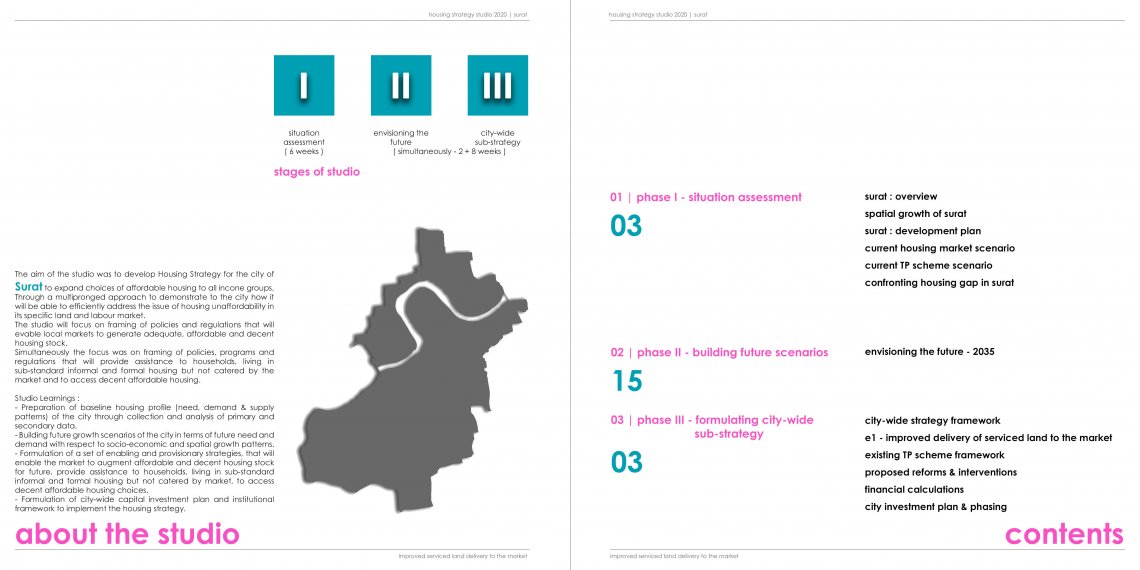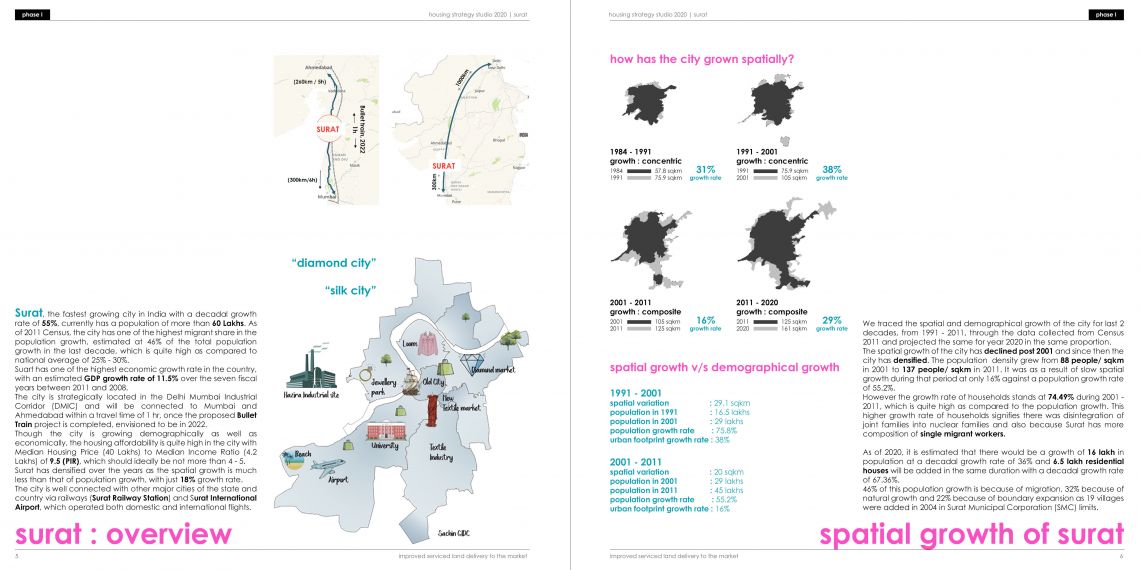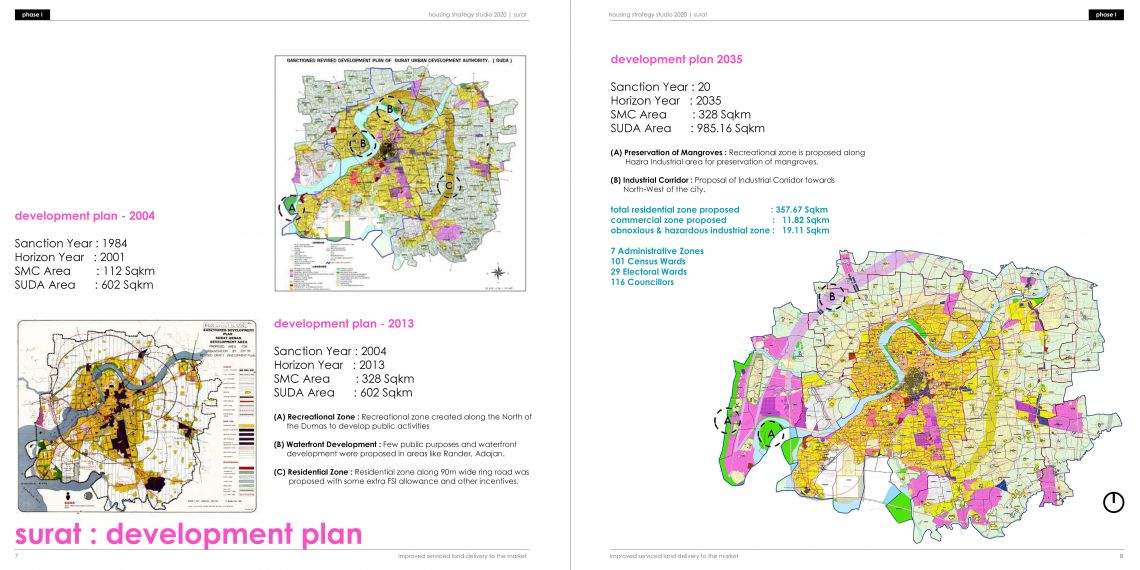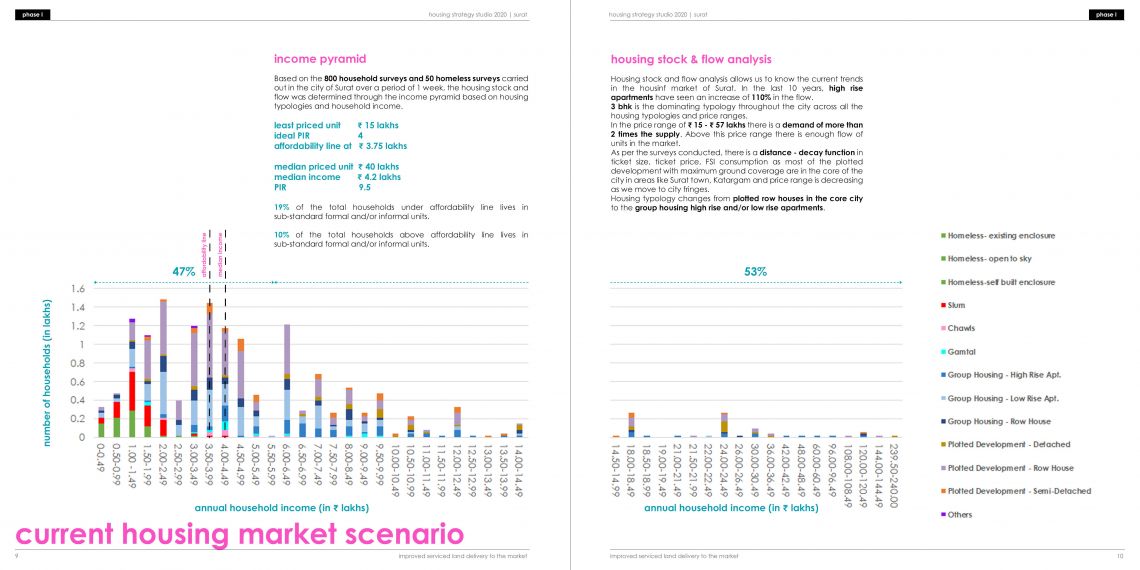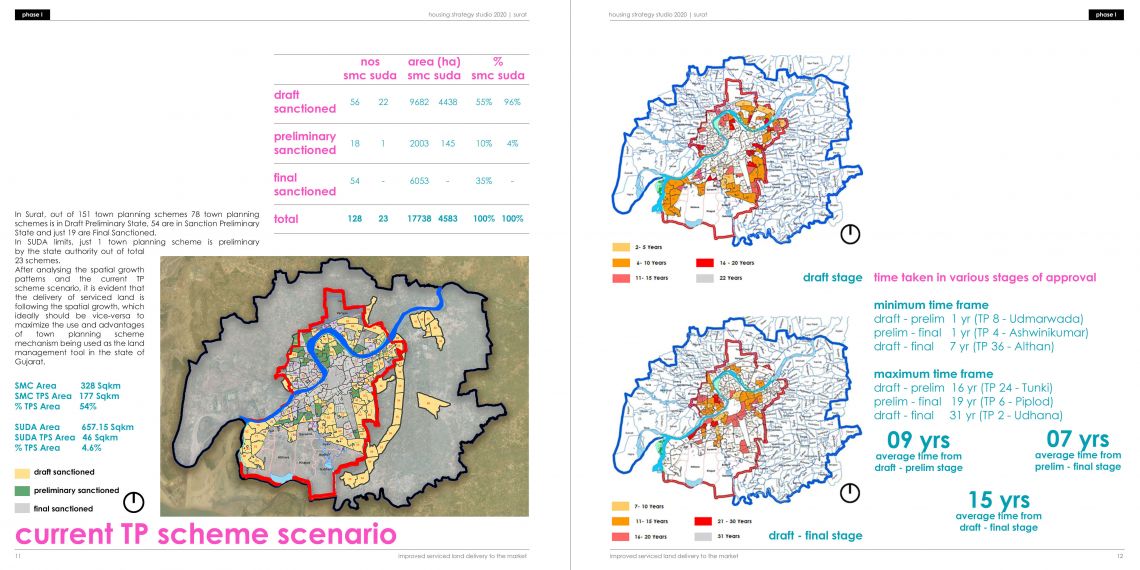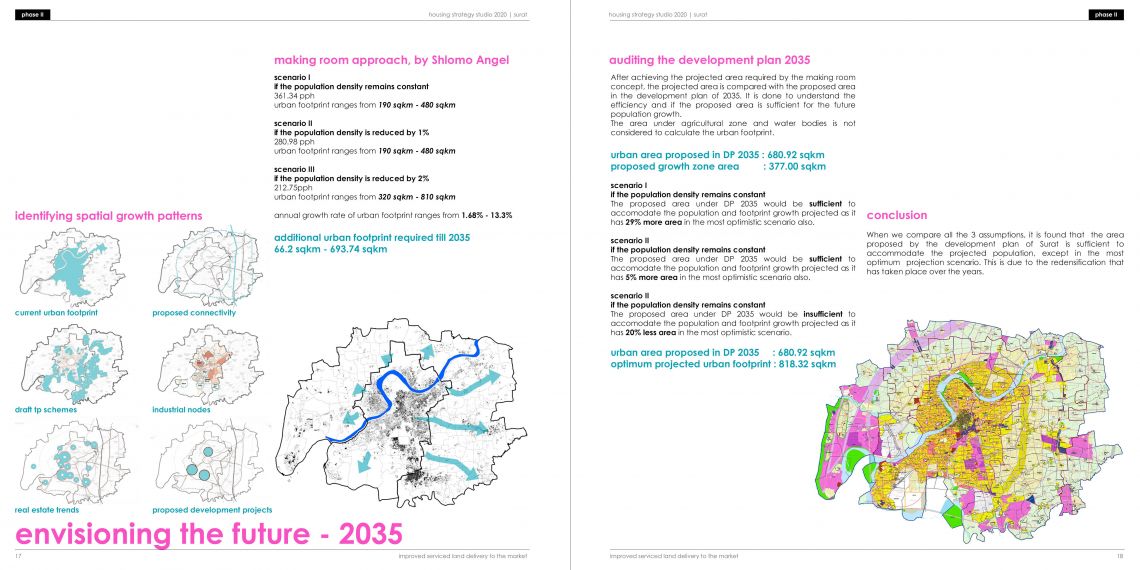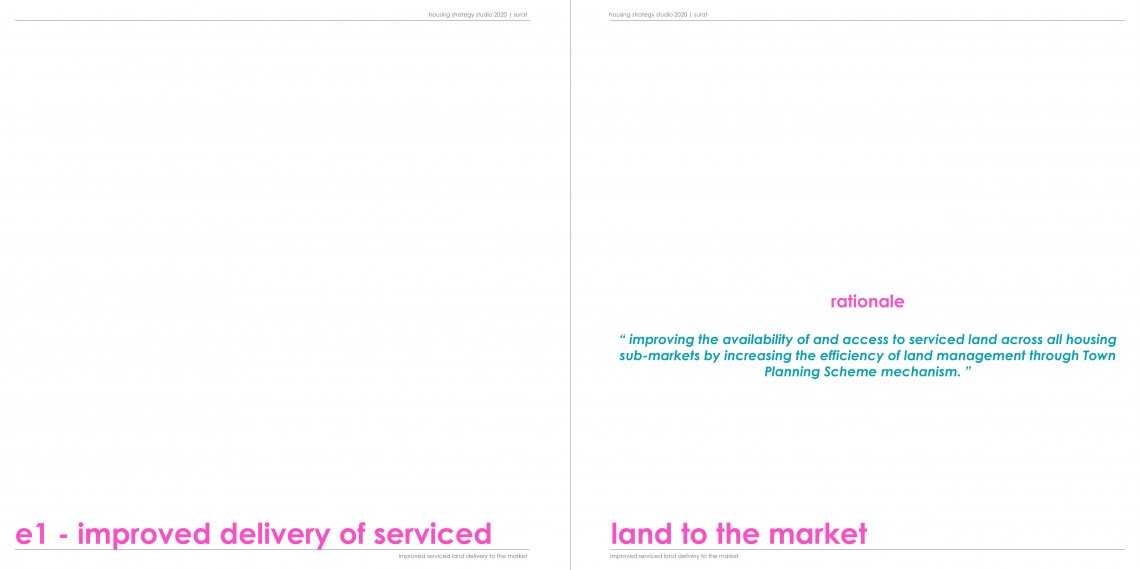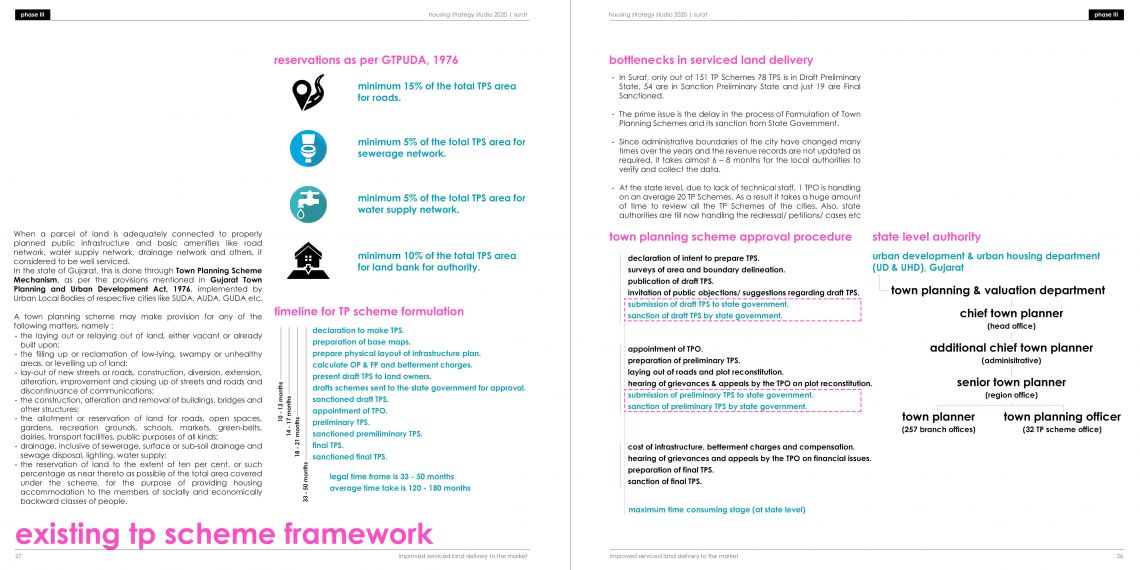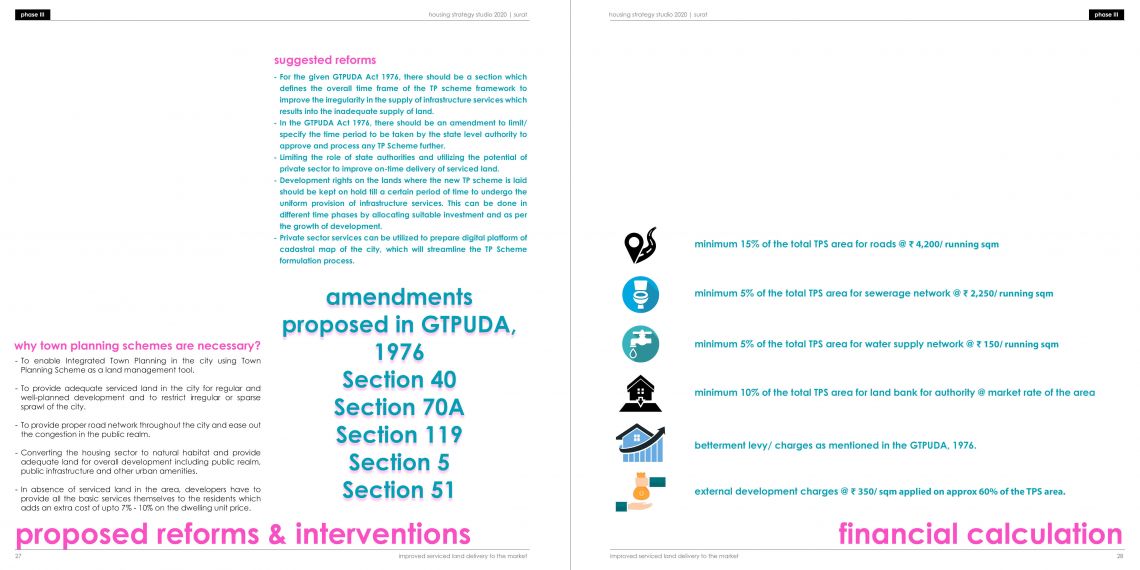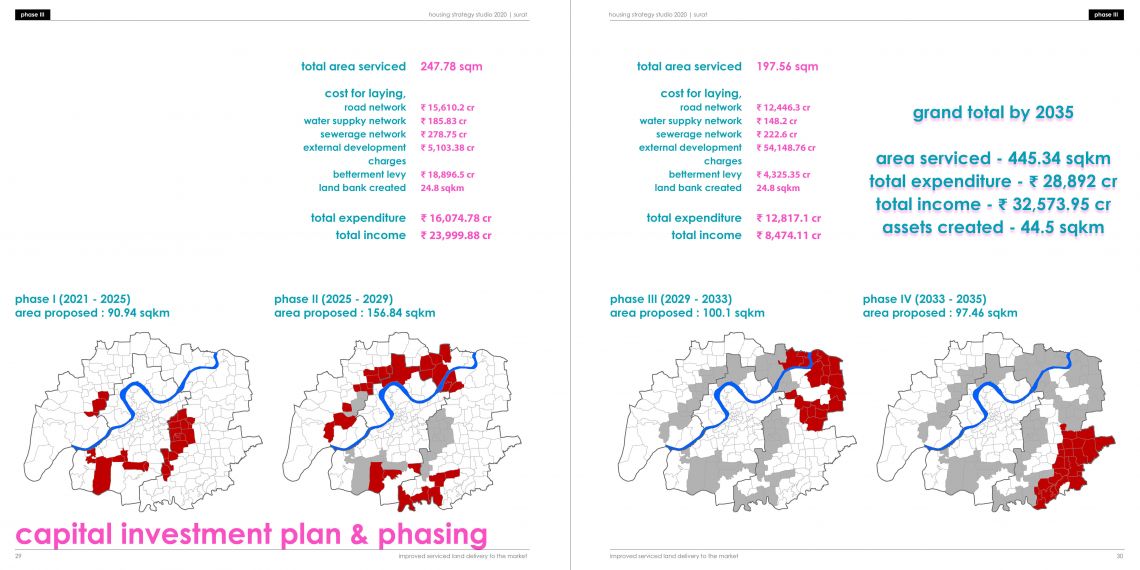Improved Serviced Land Delivery to the Market
- Student ANIRUDH AGARWAL
- Code PG190124
- Faculty Planning
- Tutor/s Sejal Patel,Amruta Patel
Phase I of the studio was more of data collection and analysis through secondary sources like Census 2011, Surat Municipal Corporation (SMC), Surat Urban Development Authority (SUDA), and other stakeholders of housing, and primary survey. The main focus of the group I was a part of, was to look at the supply of serviced land to the market and how it affects the housing market and spatial growth of Surat. As a result of this, we analyzed that the densification of the city over the past 20 years was the result of slow serviced land delivery to the market and how the spatial growth remained skewed in the last 2 decades. The survey we conducted as a part of our studies was based on household typologies and densities in each ward of the city as provided by Census 2011. Analysis of the primary surveys indicated that serviced land is very important for the housing sector to work efficiently and provide affordable units to the entire income pyramid of the city. By the end of Phase I, we were able to prepare the baseline housing profile of Surat and analyzed the need, demand, and supply patterns in the housing market of the city. Phase II of the studio was focused on building the future scenarios based on some assumptions and to project the future need, demand, and supply patterns of the housing sector. This was done through the Making Room Approach Model by Shlomo Angles where we considered 3 scenarios of future projections. By the end of this phase, we concluded that the area proposed in the current development plan 2035 for urbanization would not be sufficient in the most optimistic case if population density of Surat is decreased by 2% annually and it would require some 20% extra area to be proposed by end of 2035. Phase III of the studio was aimed at formulating individual sub-strategies to augment the housing supply in the market for all income groups, in which I chose to work on improved delivery of the serviced land to the market. It saw the state as an enabler for the entire income pyramid of Surat and supply serviced land to the market to cater demands of all income groups. The sub-strategy formulation was done at an individual level. The methodology I chose to formulate the sub-strategy started from analyzing the existing framework and current scenario of serviced land and ended at the future proposals of serviced land and finally the city investment plan. I’d done the viability analysis to understand why serviced land is important for the housing sector and how it gets affected because of short supply in the case of Surat city. There were some reforms suggested in the existing Gujarat Town Planning and Urban Development Act, 1976 as well as some local-level reforms to speed up the process of delivery of serviced land to the market.
